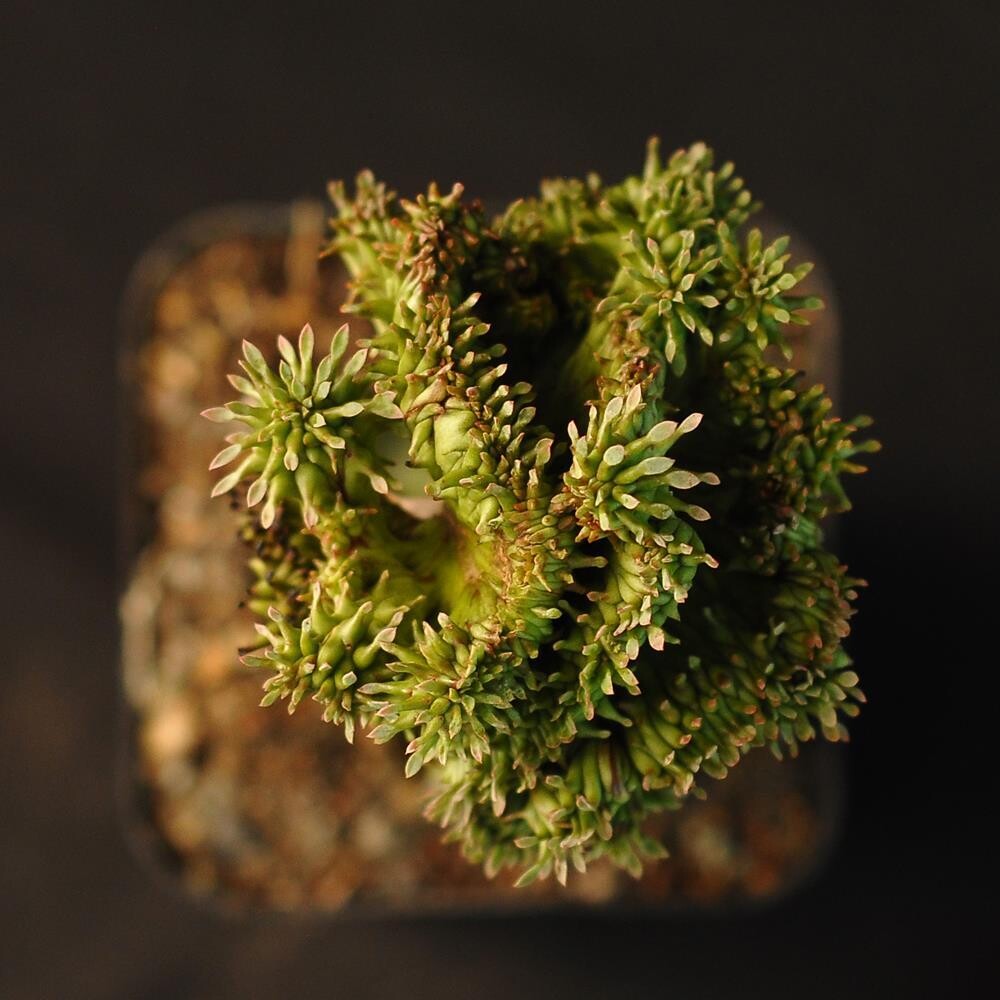Please check the Shipping Updates Page for information on shipping.
Euphorbia enopla Crest
Grafted crest of E enopla on E hermentiana.
Origin of Name
The genus name "Euphorbia" is attributed to Euphorbus, a Greek physician of King Juba II of Numidia. He reportedly used a certain Euphorbian plant for medicinal purposes. The species name "enopla" derives from the Greek word “enoplos,” meaning “armed,” referring to the plant's spiny appearance. The term "Crest" in Euphorbia enopla Crest refers to the mutation that causes the plant to form a crested shape, rather than growing in its normal columnar form.
Technical Description of Plant
The Euphorbia enopla Crest is characterized by its fan-shaped or wavy, crested growth, forming intricate and undulating patterns. The plant's deep green, photosynthetic stems are densely covered with robust, red spines that provide a striking contrast. Unlike typical Euphorbia enopla that grows in columnar forms, the crested variety displays a sprawling, coral-like structure. This succulent can reach a substantial size, making it an impressive specimen in any collection.
Origin of Plant
Euphorbia enopla is native to South Africa, thriving in semi-arid environments. The crested form, like many crested succulents, is a result of a rare mutation and is highly prized for its unique appearance. These plants are often propagated from cuttings to maintain the crested form.
Conservation Status
While Euphorbia enopla as a species is not listed as endangered, all Euphorbias are listed on CITES Appendix II, which regulates their international trade to ensure it does not threaten their survival. The crested form is primarily propagated in cultivation and is not subject to the same environmental pressures as wild populations.
Care Instructions
Euphorbia enopla Crest prefers bright, indirect light and can tolerate some direct sunlight. It requires a well-draining soil mix, typical of cacti and succulents. Water the plant thoroughly when the soil is completely dry, typically every 1-2 weeks during the growing season and less frequently during winter. Being drought-tolerant, it is crucial to avoid overwatering. Provide a temperate environment, protecting it from frost. Caution should be exercised when handling this plant, as its sap can be irritating to the skin and eyes.
